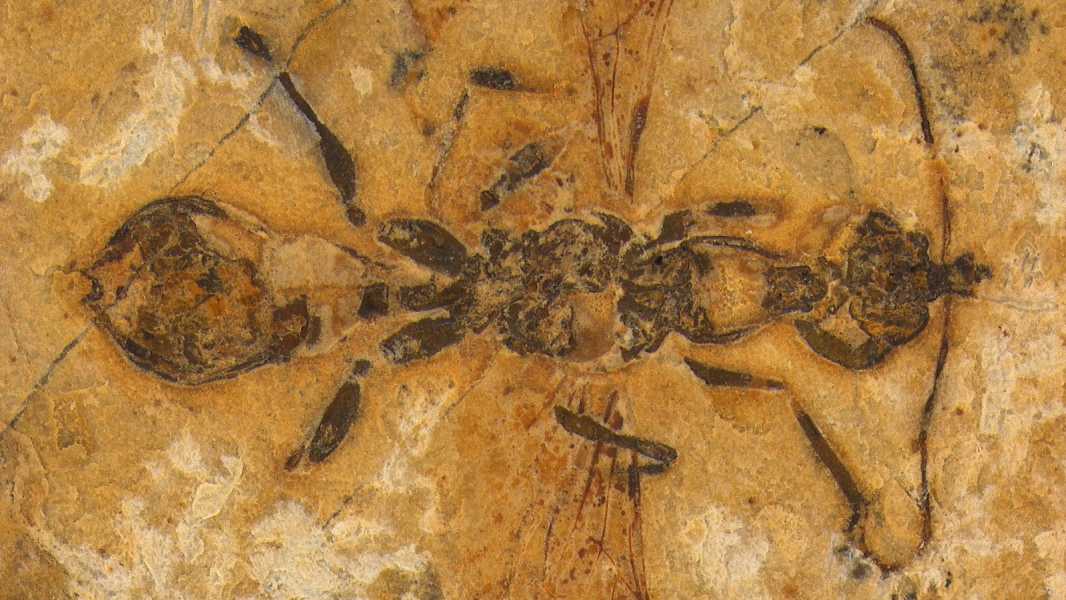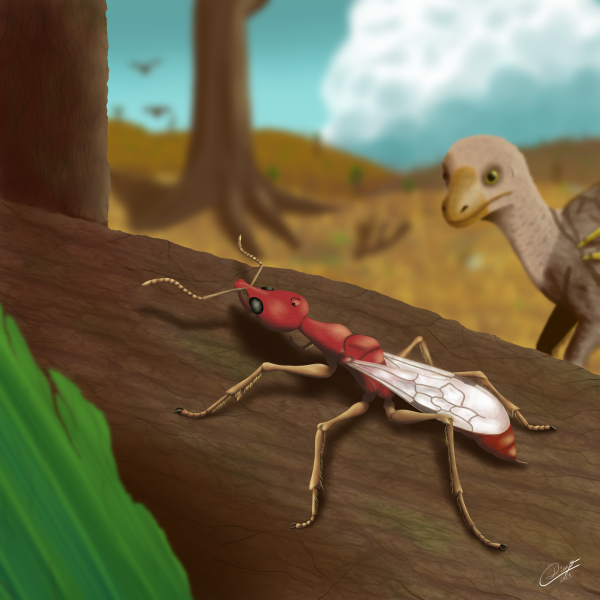
An image of a fossilized “hell ant.” (Photo courtesy of Anderson Lepeko)
A newly discovered fossil of a “hell ant” may be the oldest known ant, researchers say.
The fossil insect was discovered in what is now northeastern Brazil and lived about 113 million years ago, during the Cretaceous Period (145 to 66 million years ago), according to a new study published April 24 in the journal Current Biology.
“Our team has identified a new species of fossil ant that represents the earliest undisputed geological record of ants,” study co-author Anderson Lepeko, a researcher at the Zoological Museum of the University of São Paulo in Brazil, said in a statement. “This discovery is particularly notable because it belongs to an extinct ‘hell ant,’ known for its unusual predatory adaptations.”
The newly identified ancient ant species, named Vulcanidris cratensis, had scythe-shaped, upward-pointing jaws that it could use to capture and impale its prey. “Despite its ancient lineage, this species already exhibited highly specialized anatomical features that indicate unique hunting behavior,” Lepeko said.
There are currently over 12,000 species of ants on the planet, found in a variety of ecosystems, from tropical forests to deserts. They belong to the family Formicidae, which is part of the order Hymenoptera (which also includes bees and wasps). Ants are thought to have evolved from wasp-like ancestors about 140 million years ago.
Haidomyrmecinae, also known as “hell ants,” were an extinct subfamily of ancient ants that existed during this period. Several species of hell ants were previously found in amber fossils in Myanmar, France, and Canada dating back about 100 million years, which were previously thought to be the earliest known ant fossils.
These hell ants had an unusual head and jaw shape unlike any modern form, with upward-curving jaws instead of the inward or downward-curving jaws of modern ants, which could be closed vertically. Many species also had horn-like projections above the mouth, which are thought to have clamped the jaws to capture prey. One previously discovered 99-million-year-old fossil even captured a hell ant in the act of attacking a victim, frozen in amber as it struck.

An illustration of what this ancient ant might have looked like.
New
Sourse: www.livescience.com





